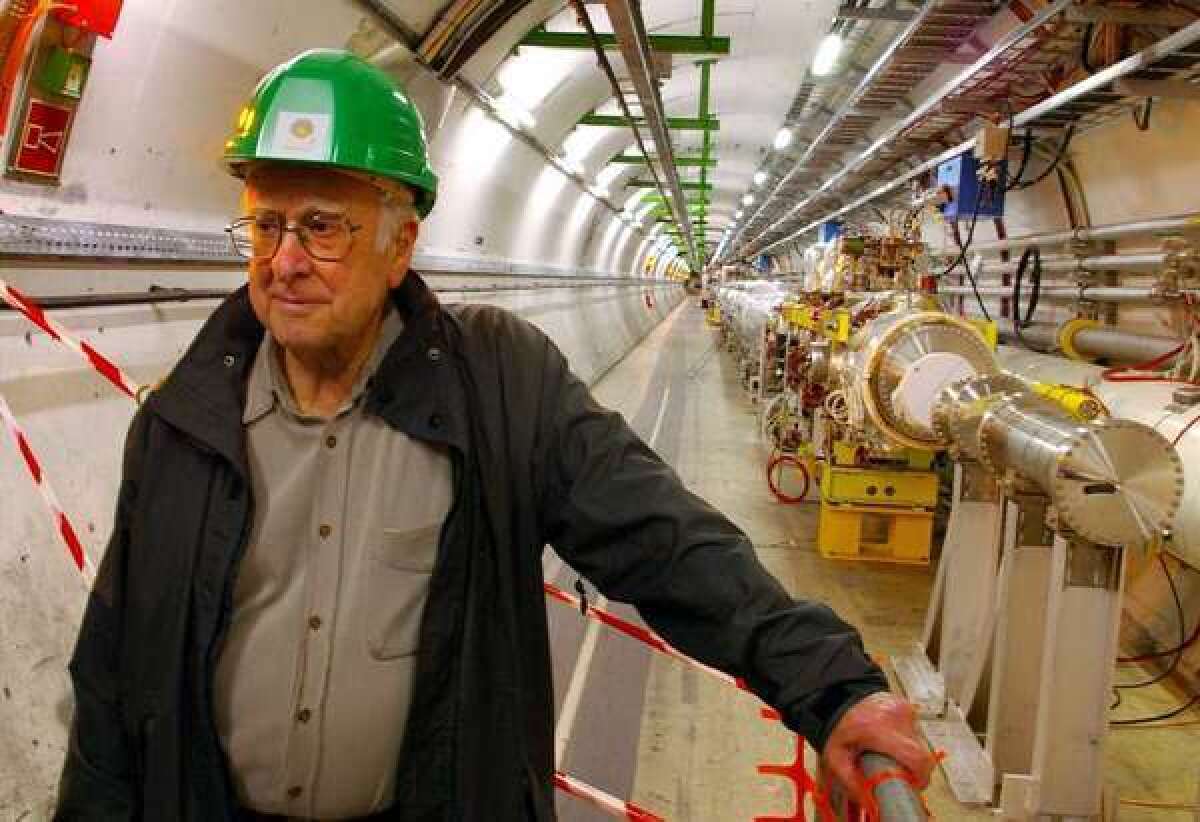CERN: We’ve found ‘a Higgs boson’; but is it predicted version?

- Share via
Evidence indicates that the new particle discovered at the Large Hadron Collider is a Higgs boson, officials at the European Organization for Nuclear Research, also known as CERN, said Thursday. But whether it is the version of the Higgs boson predicted by the Standard Model of Particle Physics is not yet known.
As the Los Angeles Times wrote last week (see top story in related items to the left,) results reported at the Moriond Conference in Italy continue to boost physicists’ belief that the newly seen elementary particle is indeed evidence that the 1960s-era theories of Peter Higgs are holding up.
Higgs, along with other theoretical physicists, theorized that matter is created in the universe when particles interact with a pervasive field which essentially slows them down and imparts mass. This came to be known as the Higgs field. Physicists also suggested that experiments should be able to detect a particle that arises in conjunction with that process. That particle came to be known as the Higgs boson.
Until the LHC began smashing protons together, colliders hadn’t been powerful enough to see the Higgs. But new data released in the past week support the (already widely recognized) notion that physicists at the facility near Geneva are now seeing some version of a Higgs boson.
“In most people’s minds, it’s a done deal—it’s the Higgs or it’s something so much like it that it’s silly to call it anything else,” said Columbia University mathematician Peter Woit, who writes the blog Not Even Wrong.
But whether it is precisely the particle predicted by the Standard Model won’t be known for some time, CERN scientists said. To figure that out, said UC San Diego physicist Vivek Sharma, physicists will need 10 to 12 times more data than they have to study today — data that won’t be forthcoming until the machine, which is currently shuttered, powers up again in 2015.
“Any search like this is basically divided into two pieces,” said Sharma, who led CERN’s Compact Muon Solenoid detector Higgs search and is still a member of the team. “One is the sprint: You chase to show you have found something new. Now comes the marathon, where we carefully investigate the DNA of the particle. What we have seen this week is the next step in defining the DNA of the particle.”
In the meantime speculation continues (for instance, in comments like this one at Not Even Wrong) over whether it’s time for the Nobel committee to consider giving an award to Higgs and other scientists who theorized the Higgs boson — even if the particle’s exact nature isn’t completely known. Rutgers University physicist Matthew Strassler wrote Friday that the time had come.
“All in all, I think it is pretty safe now to award the Nobel prize to the theoretical physicists behind this story; last year was too early, but this year is not,” he blogged. “Its properties are more or less in line with what Higgs and friends proposed, enough to give them credit for having correctly imagined (to greater and lesser degrees) how nature” provides mass to particles.
In July, the Los Angeles Times wrote a story about CERN’S Higgs discovery.
In December, we wrote about the search for the elusive Higgs.
Follow me on Twitter: @LATerynbrown.




